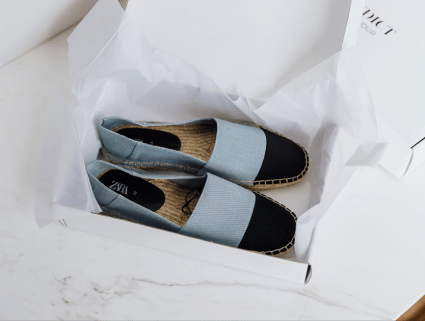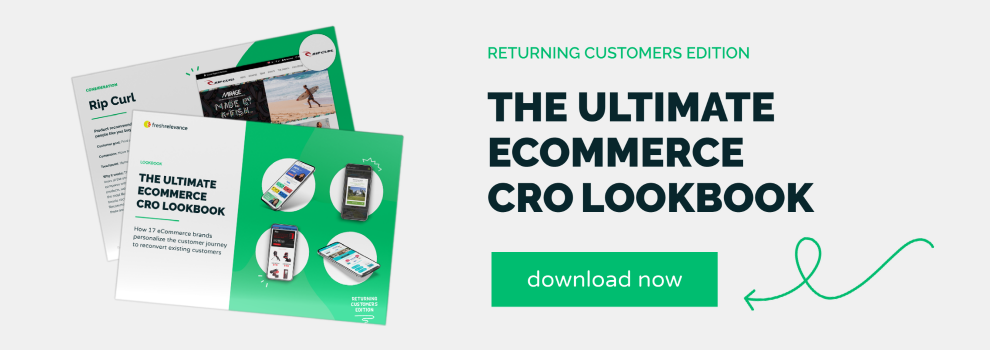Fashion is the largest B2C eCommerce market segment, according to Statista. But the Covid-19 pandemic has led to brick-and-mortar store closures and declining consumer confidence, with less new clothing purchases needed during extended periods spent at home. However, with more shoppers heading online, eCommerce fashion brands and online fashion retailers are presented with an opportunity to capitalize on this larger pool of potential customers.
To convert more customers and foster loyalty during the pandemic and beyond, fashion eCommerce businesses will need to provide the tailored, seamless experiences that today’s consumers desire.
How can they do this?
By using the wealth of browse and purchase data available to fashion businesses to put the right products in front of the right people at the right time.
Read on to learn which tactics to use for your own fashion industry eCommerce stores to create seamless, tailored experiences that result in more revenue and happy customers, with real-life examples from six successful fashion businesses.
1) Product recommendations
Product recommendations are a lucrative tactic for any eCommerce business, and can generate sales uplifts of up to 11%.
Fashion shoppers tend to have penchants for particular colors, styles and brands, not to mention sizes. Successful online retailers and fashion eCommerce brands use this information to help their online shoppers find the products they are looking for faster, reducing click to purchase rate.
Rip Curl uses AI recommendations on their homepage to greet returning and loyal customers with a selection of products picked ‘just for you’, based on products that were bought by similar customers.
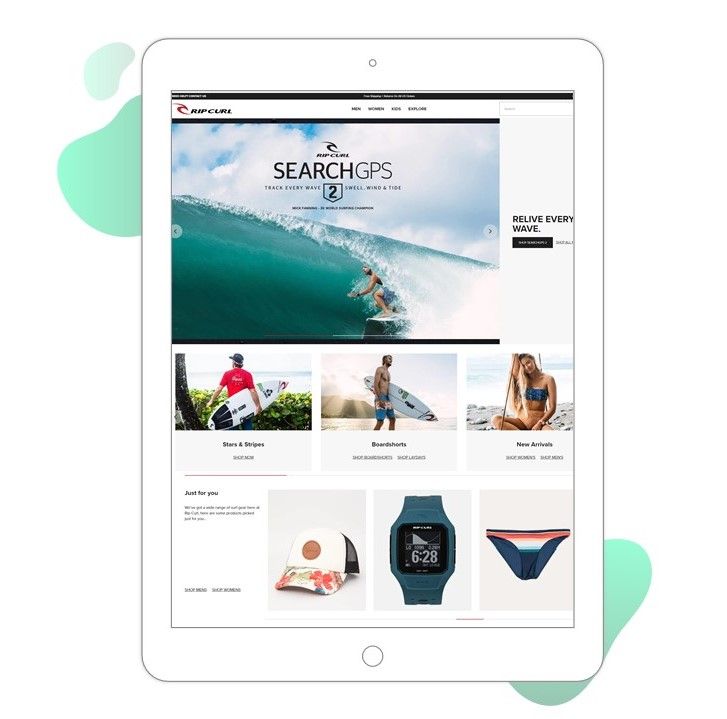
Source: ripcurl.eu
Learn more: Rip Curl sales swell by more than 10% with eCommerce personalization
For new shoppers and potential customers visiting your website, showcasing new arrivals can be an effective type of product recommendation, particularly in sectors driven by fast-moving trends such as the fashion industry. By giving top billing to their new arrivals on the homepage banner, advertising new eCommerce trends, Surfdome builds excitement around the shopping experience and plays to our built-in expectation that something new must be better than what came before.
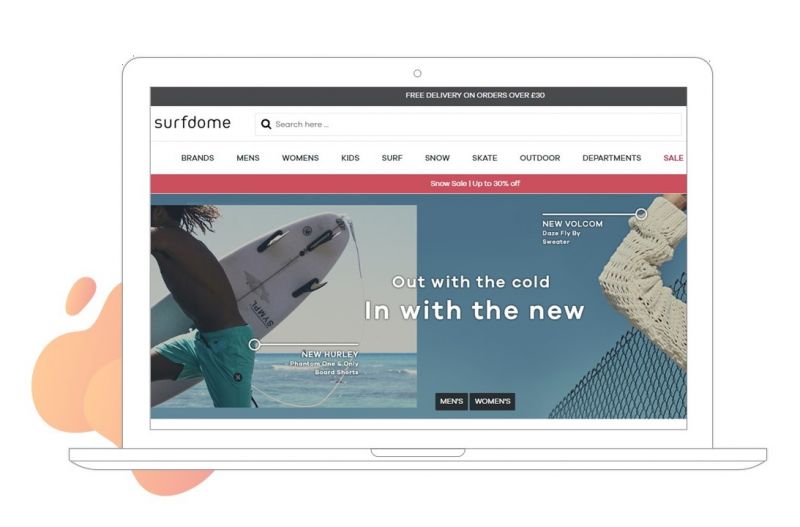
Source: surfdome.com
2) Dynamic content
Dynamic content gives marketers the power to personalize every step of the customer journey to an individual’s preferences, behavior and real-time context. Each user sees content that is timely and relevant, which in turn encourages clicks and sales. This is a very useful tool for eCommerce fashion industry businesses.
Surfdome uses a dynamic countdown timer in their bulk email marketing to build excitement and urgency around their sale deadline.
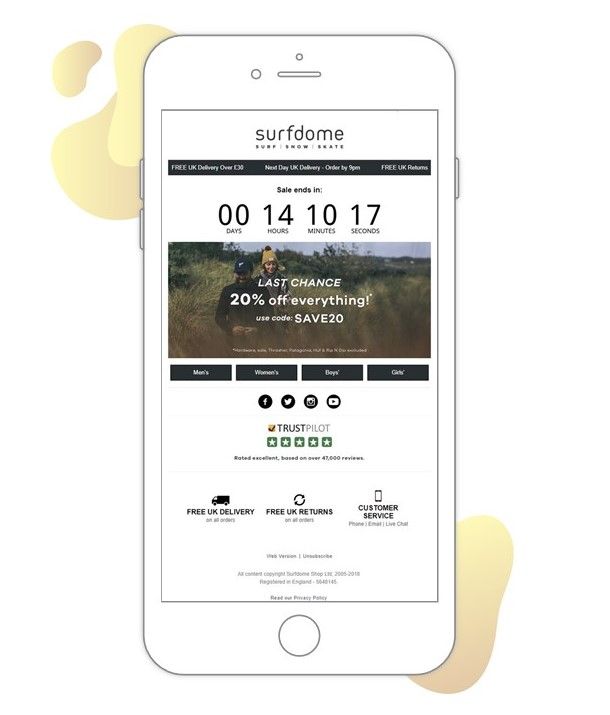
Source: Surfdome email
Killstar is one of the fashion eCommerce store examples whose use of dynamic content demonstrates there’s no excuse not to personalize the experience for new shoppers to your site. Their real-time homepage banners change once a shopper has browsed a handful of products, recommending products for males or females depending on what the shopper has browsed. This allows Killstar to keep new shoppers engaged by showing them products that are most likely to spark their interest, despite not having any historical purchase data.
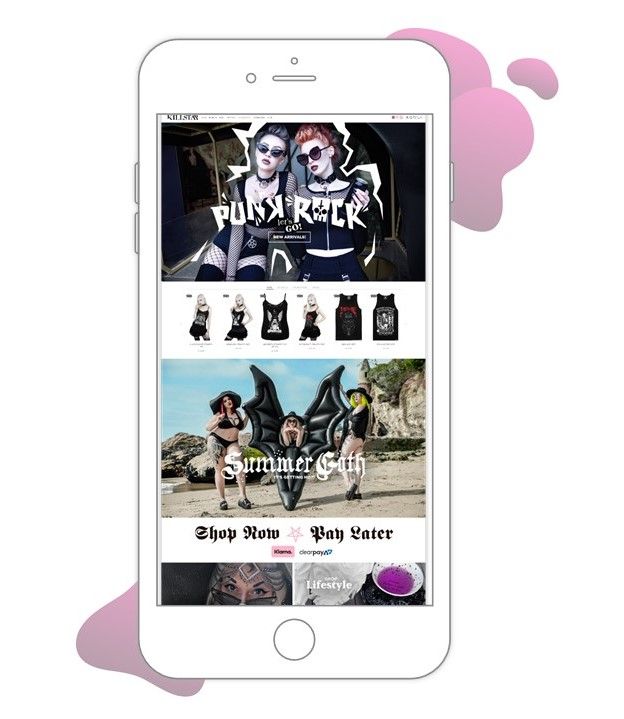
Source: Killstar.com
3) Social proof
Social proof helps marketers increase conversions by reassuring customers that they are buying the right product, with tactics including ratings and reviews, customer testimonials, and crowdsourced product recommendations.
This boosts online sales for fashion eCommerce stores, since the lack of ability to try on fashion products when shopping online (and Covid-19 meaning no access to fitting rooms in-store) means that social proof cues are all the more crucial.
One study found that over one in four consumers made a return because the product was misrepresented. Avoid this issue by showing shoppers what your product looks like in real life with user generated content (UGC) alongside the product they are browsing. One in three shoppers prefer to see a product as it is worn or used by real people as opposed to professional product images, so it pays to use this social proof tactic.
Killstar adds UGC from social media channels to their product pages on their eCommerce website to give people engaging with the brand through online shopping an accurate idea of how the product will fit into their lives.
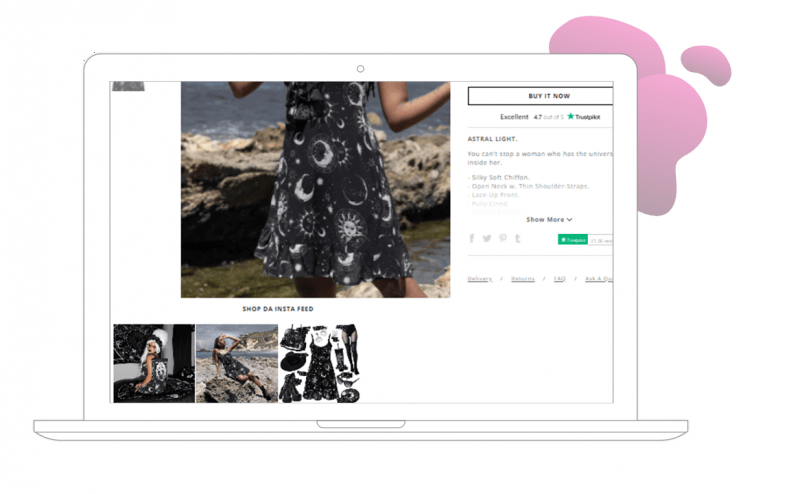
Source: Killstar.com
Popularity messaging is another key social proof tactic, allowing retailers and brands to harness the power of FOMO and speed up the purchase decision. True Vintage uses popularity messaging to display how many other shoppers have looked at a particular item in the last hour, signaling to their shoppers that this is a product worth buying. Social proof tactics on eCommerce sites such as popularity messaging can lead to sales uplifts of up to 13%.
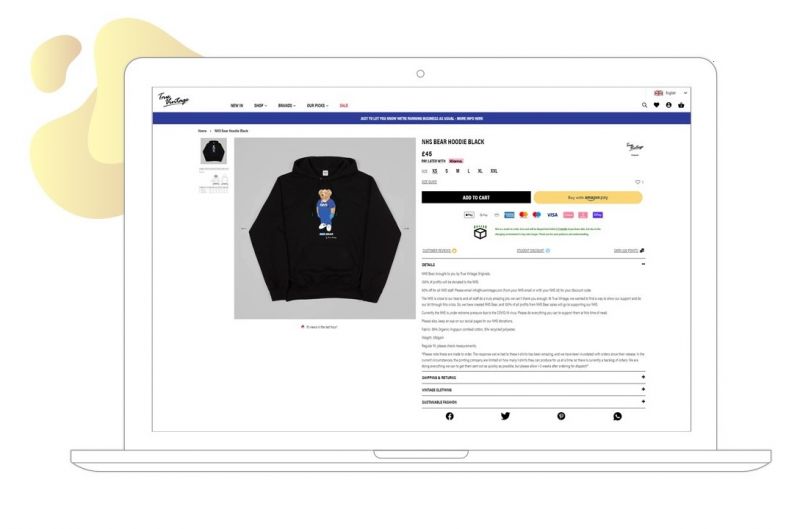
Source: truevintage.com
4) Triggered emails
Triggered messaging is all about delivering personalized, real-time content to shoppers at the moment they are most likely to convert. Not only are triggered emails useful tools to facilitate a smooth shopping experience, they are proven revenue boosters that encourage customers to purchase more products from your online store.
Shopping abandonment is one of the most popular types of triggered email, sent automatically when a customer abandons a cart or leaves a browsing session without buying. When shopping for fashion products online, a plethora of options combined with the inability to try on products means abandoned carts are inevitable. During major shopping events on the fashion eCommerce calendar such as Black Friday, abandoned carts are even more prolific, with shoppers often hopping between multiple websites and devices to bag the best deals. Zee & Co uses their abandonment emails to remind shoppers of their Black Friday Black Tag event.
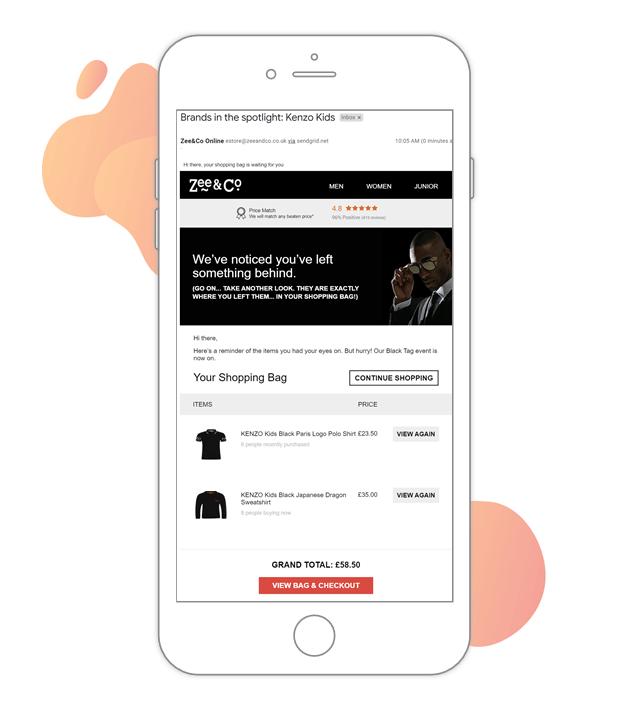
Source: Zee & Co email
The numbers speak for themselves, with the average Fresh Relevance client doing cart and browse abandonment achieving a sales uplift of 12%.
Another triggered messaging tactic to add to your online fashion retailers toolkit is price drop emails, a triggered email that lets everyone who has shown interest in the product know that it just got cheaper. These emails encourage price-conscious shoppers and increase loyalty by providing useful information. With sales lifts for this specific type of alert averaging 3%, this is a triggered email tactic worth trying.
Details of the browsed item should be included in the email to remind the shopper what they looked at and make the offer more compelling, as Country Attire does in this example.
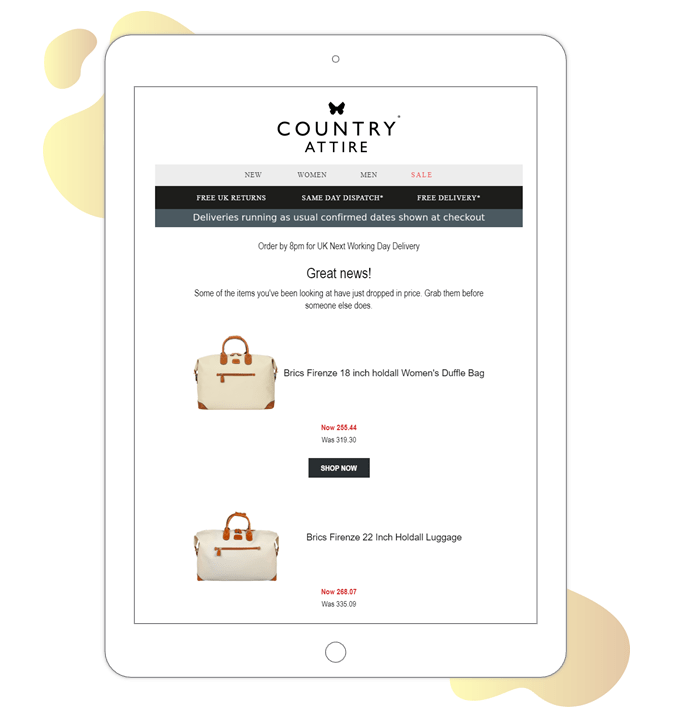
Source: Country Attire email
Learn more: Designer fashion retailer boosts sales with cart abandonment emails
For more inspiration check out our Ultimate Ecommerce CRO Lookbook [returning customers edition], packed with 17 real-life eCommerce personalization examples to foster brand loyalty and reconvert existing customers.


